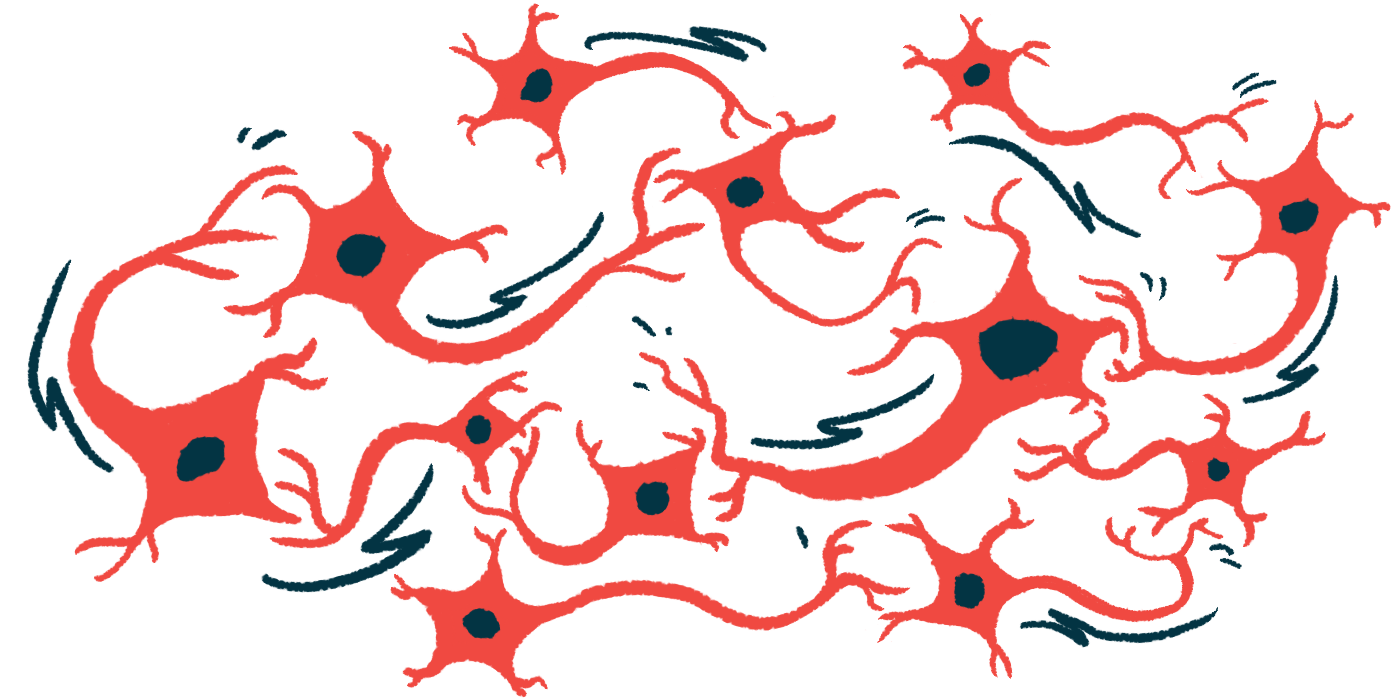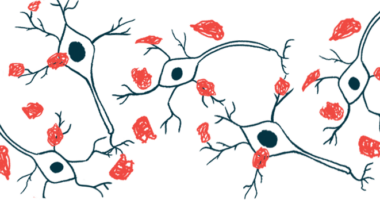NEMO protein crucial for clearing nerve cells of toxic alpha-synuclein
It docks to misfolded forms, sending them to a cell's recycling center

A protein called NEMO can dock to misfolded forms of alpha-synuclein — the protein whose toxic aggregates damage and kill nerve cells in Parkinson’s disease — sending them off for recycling in cellular structures called lysosomes, a study reports.
But problems with this waste disposal process can lead to Parkinson’s, as was the case of a woman who carried a rare mutation in the gene coding for NEMO. The mutation resulted in widespread deposition of alpha-synuclein aggregates in her brain.
The study, “NEMO reshapes the α-Synuclein aggregate interface and acts as an autophagy adapter by co-condensation with p62,” was published in Nature Communications.
Misfolded alpha-synuclein is a key feature of Parkinson’s disease
Nerve cell loss in Parkinson’s is linked to the buildup of misfolded alpha-synuclein within these cells.
“The fact that such aggregates occur, which are referred to as Lewy bodies, is a key feature of Parkinson’s disease,” Konstanze Winklhofer, MD, PhD, the study’s lead author and chair of the department of molecular cell biology at Ruhr University Bochum in Germany, said in a press release.
Unwanted proteins, such as those that form Lewy bodies, are labeled with ubiquitin, a molecular tag that marks them for recycling within cells. Exactly how harmful alpha-synuclein aggregates are disposed of by cells, however, remains unclear.
“Depending on how these ubiquitin molecules are linked and the length and structure of the ubiquitin chains, the cellular waste disposal system can recognize through which pathway the labeled proteins shall be degraded,” Winklhofer said.
Earlier work by Winklhofer’s lab revealed that linear ubiquitin chains, or ubiquitin molecules arranged in a straight line, can protect nerve cells from toxic protein aggregates. Now, the team found that NEMO docks with linear ubiquitin chains on misfolded alpha-synuclein, sending the toxic protein off to lysosomes — the cells’ recycling centers.
It is known that NEMO helps to regulate key molecular networks. In lab-grown mouse cells lacking NEMO, “protein aggregation was significantly increased in response to both heat stress and lysosomal inhibition,” the researchers wrote.
Compared with wild-type (normal) cells, those lacking NEMO became more vulnerable to the toxic effects of protein aggregates. Without NEMO, they also failed to protect themselves from signals that cause their death, like heat stress.
“What’s interesting is that the protective effect of NEMO can [also] be blocked by inhibiting autophagy,” Winklhofer said. Autophagy is a process by which vesicles pack unwanted material within cells, carrying it to lysosomes to be broken down and recycled.
Winklhofer’s team found that NEMO interacts with a protein called p62, “which is required to shuttle cargo to the autophagic machinery,” the researchers wrote. By linking with NEMO and the linear ubiquitin chains, p62 forms the condensates (tiny bodies) needed to recruit the autophagic machinery to protein aggregates.
“NEMO deficiency favors the accumulation of misfolded proteins and impairs the clearance of protein aggregates by autophagy,” the scientists wrote. “By remodeling the aggregate interface and facilitating condensate formation of the autophagy cargo receptor p62,” NEMO helps nerve cells to rid themselves of misfolded alpha-synuclein.
Woman’s aggressive Parkinson’s tied to mutation causing shorter NEMO protein
A significant moment in this research occurred, Winklhofer said, when neurologists at the University of San Francisco reached out to her regarding an interesting case.
A woman with incontinentia pigmenti since infancy, a rare disease characterized mainly by problems with the skin and caused by mutations in the IKBKG gene that provides instructions for making NEMO, was diagnosed with Parkinson’s at age 48.
Her Parkinson’s progressed rapidly, and she died at age 56. Genetic testing showed a mutation called c.988C>T in the IKBKG gene, which resulted in a shorter version of NEMO that was unable to connect to linear ubiquitin chains.
“Our biochemical and cell biological characterization of the NEMO variant showed that it’s unable to bind to linear ubiquitin chains and therefore can’t dock to protein aggregates,” Winklhofer said.
Analysis of the woman’s brain revealed widespread deposits of alpha-synuclein aggregates. “It should be noted that other protein aggregates could also be detected, such as those that occur in Alzheimer’s disease,” Winklhofer said.
“This explains the severe course of the NEMO-associated disease and underpins a general role of NEMO in the quality control of aggregated proteins,” she added.
Winklhofer and her team now are investigating the possibility of a therapy approach to correct problems in this cellular recycling process.







